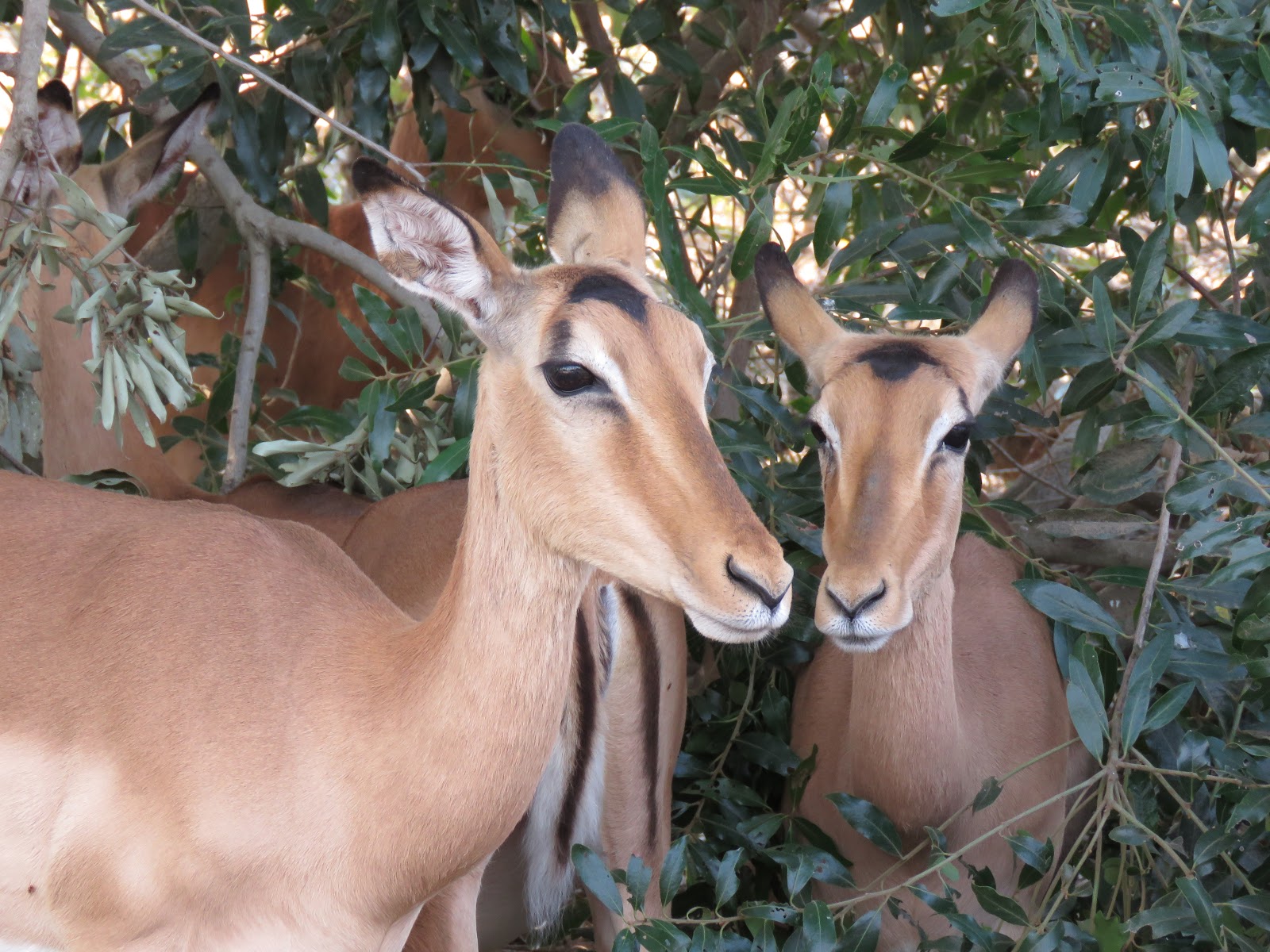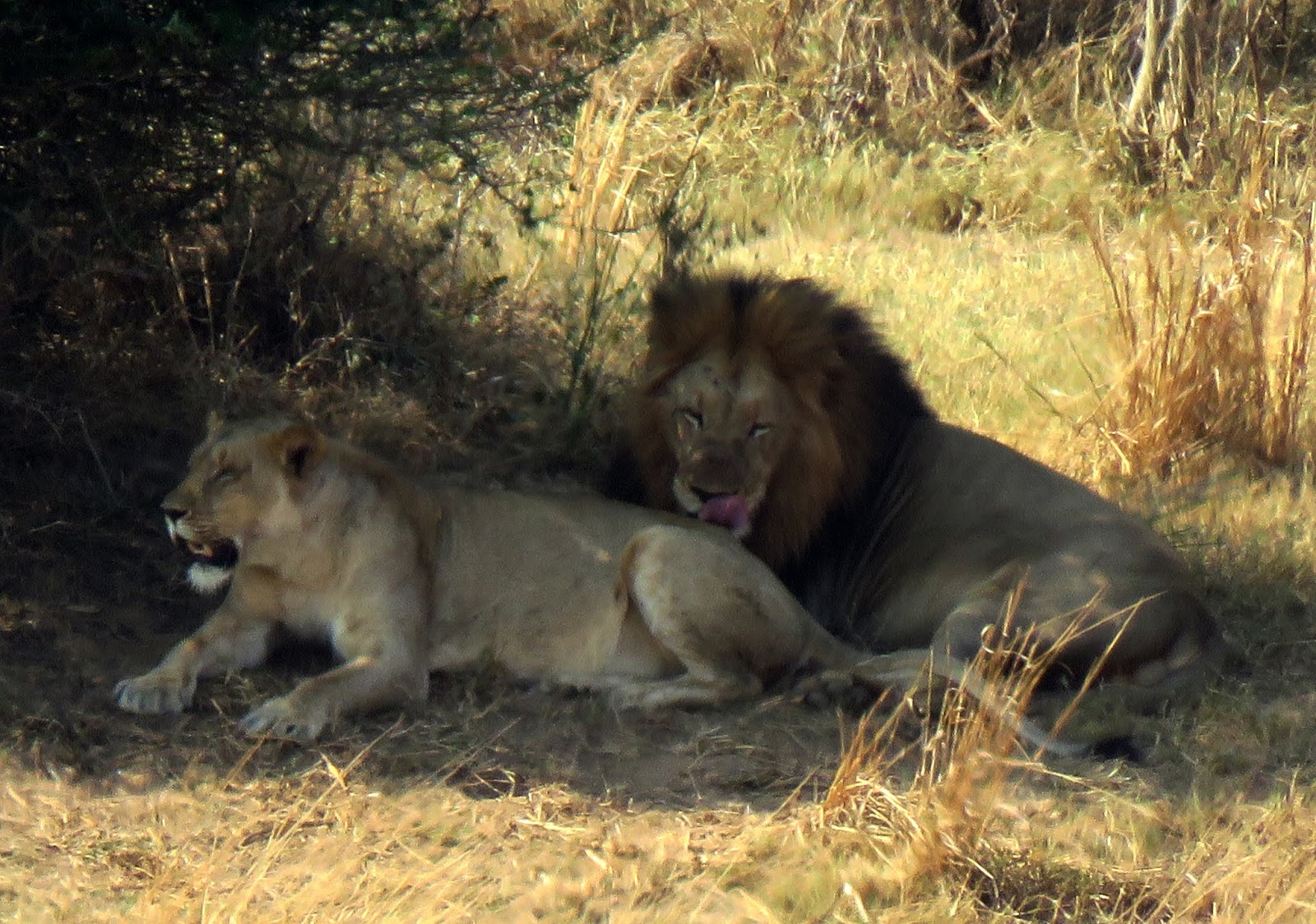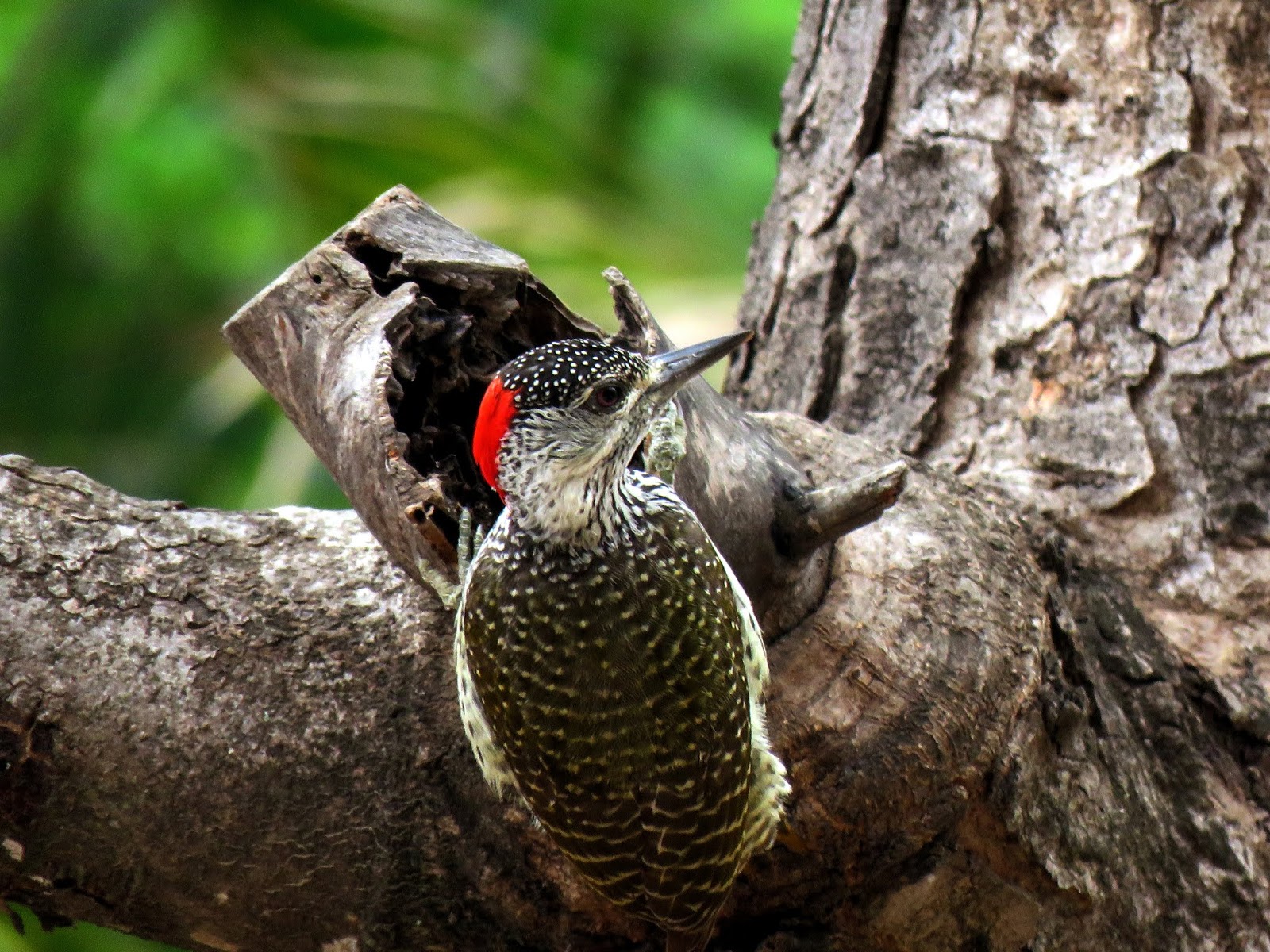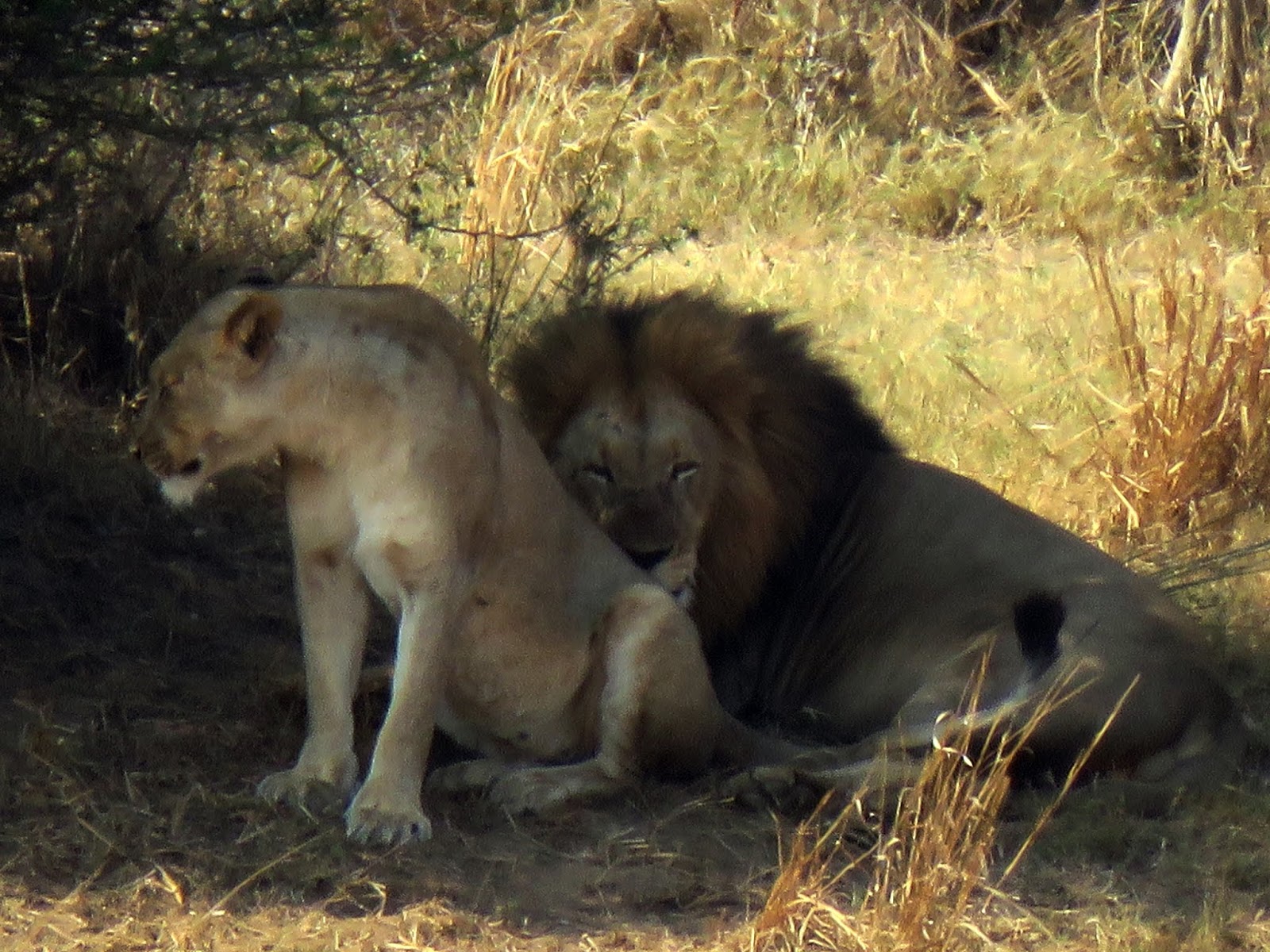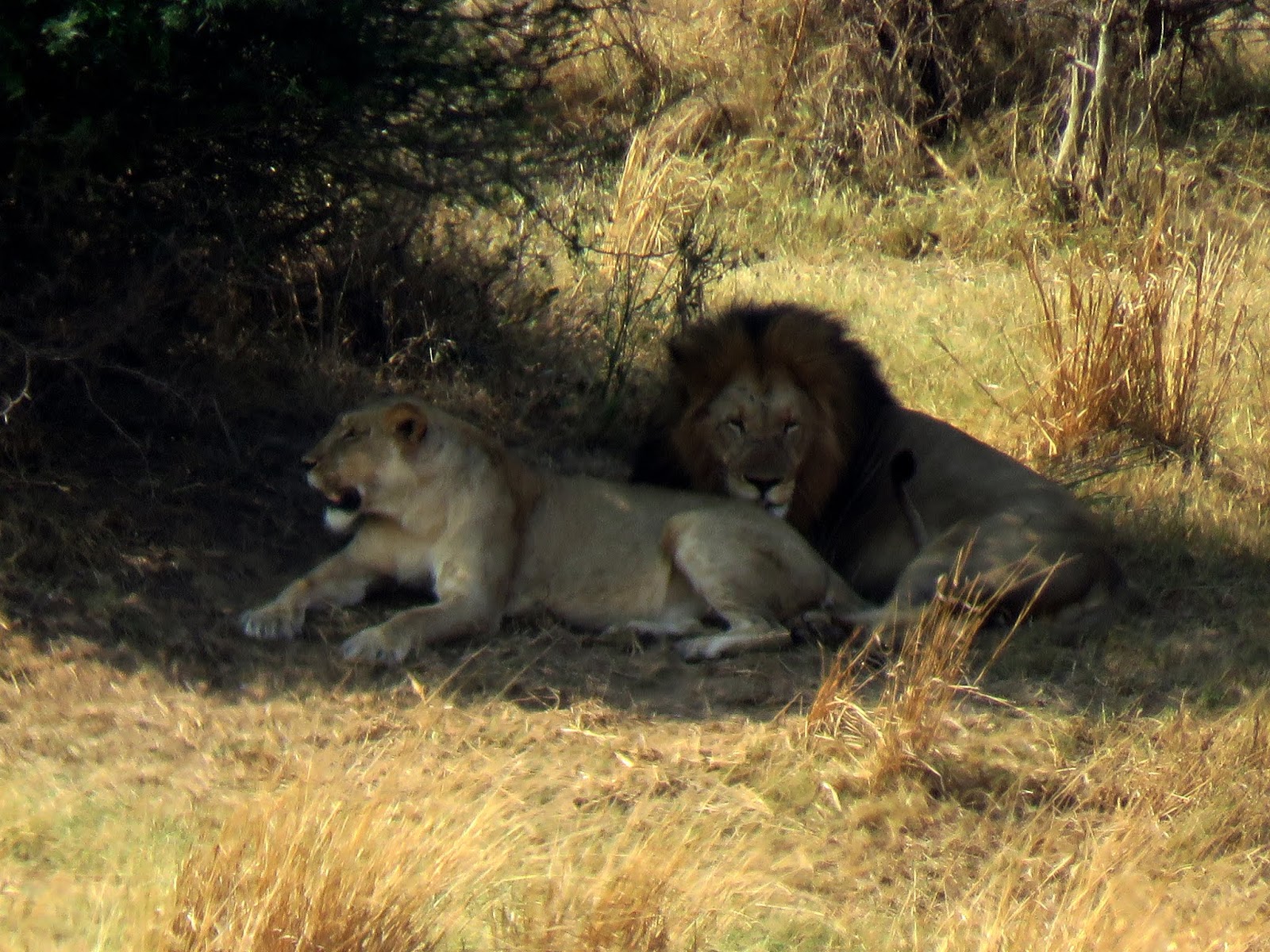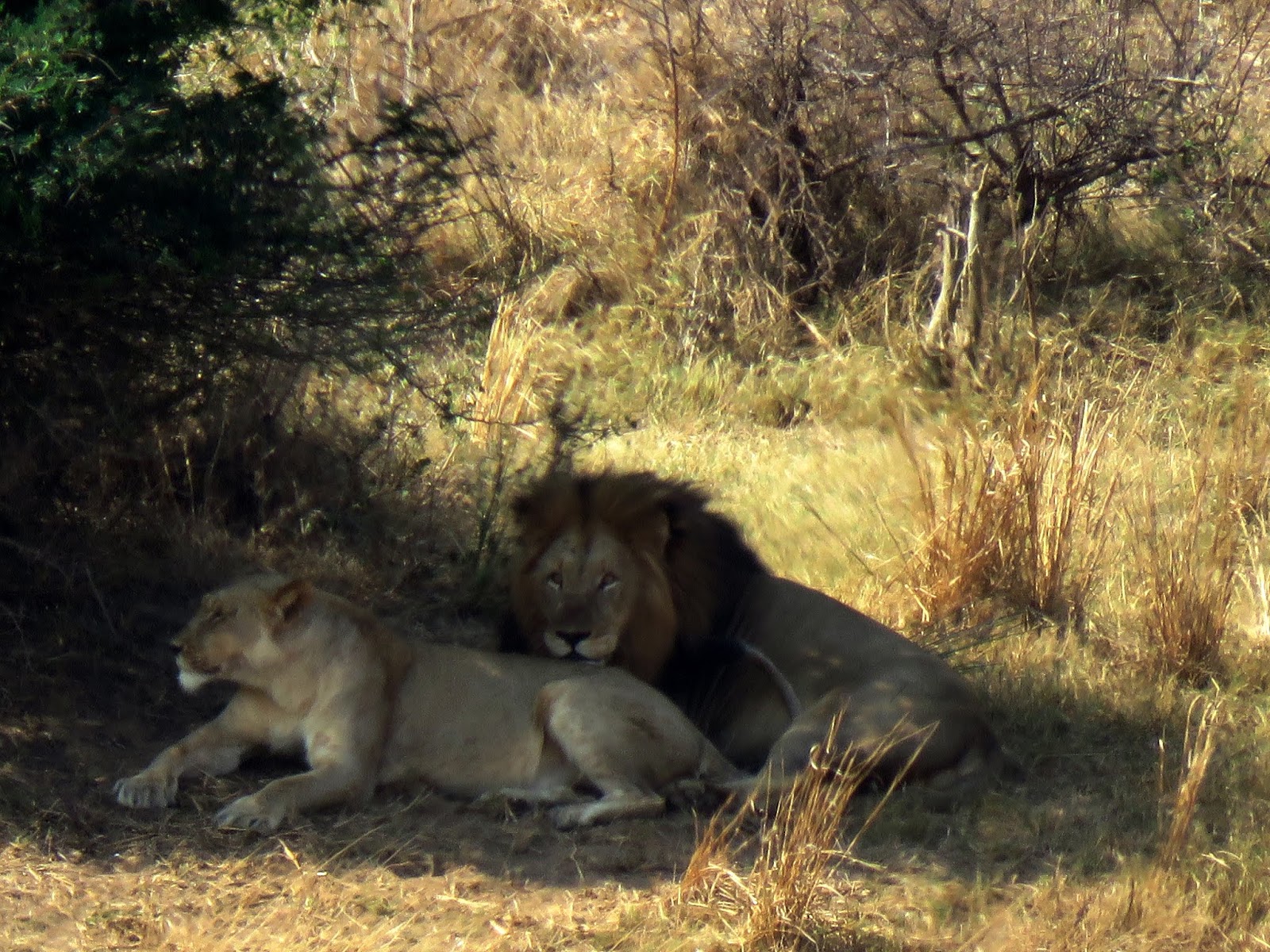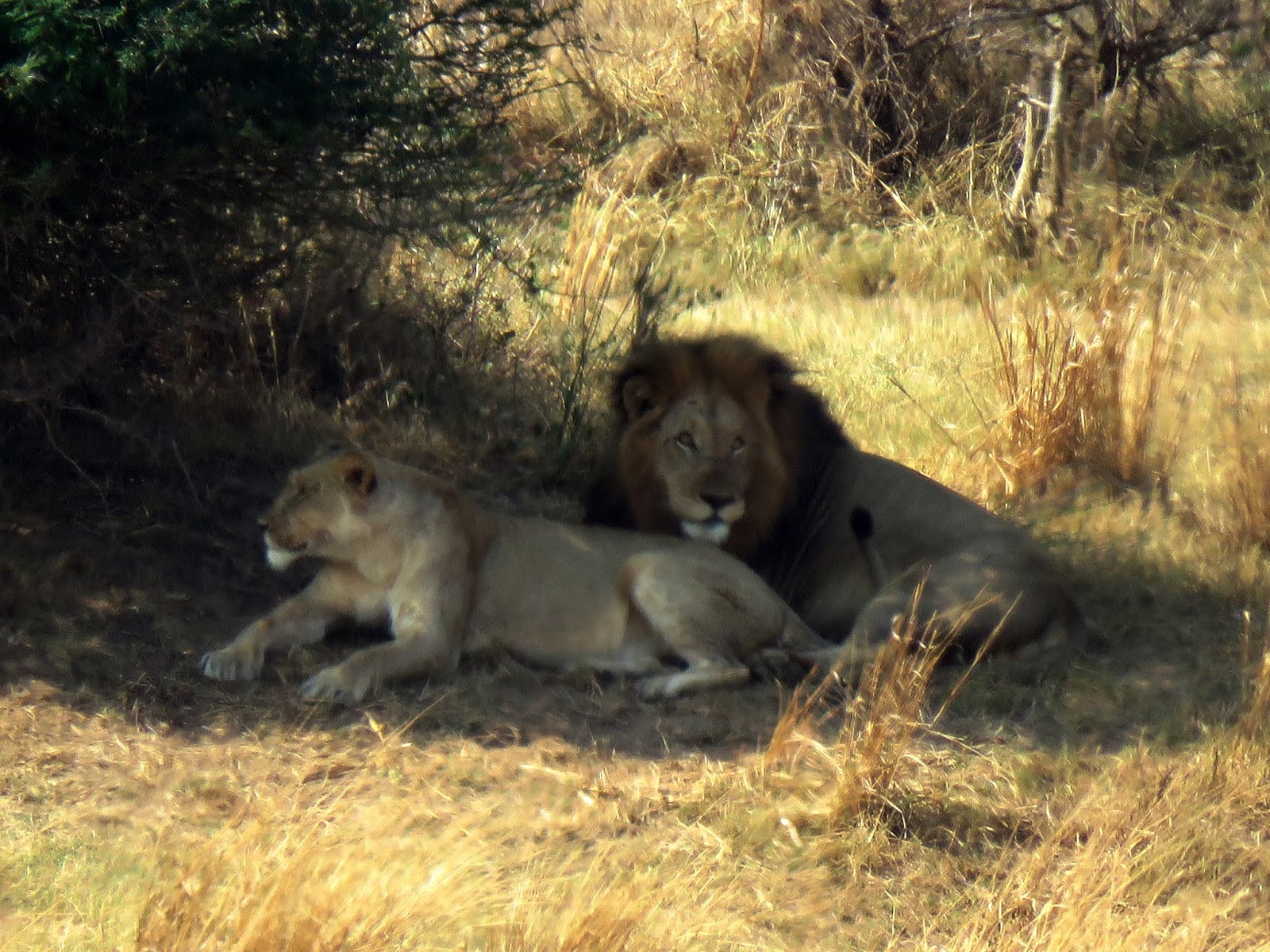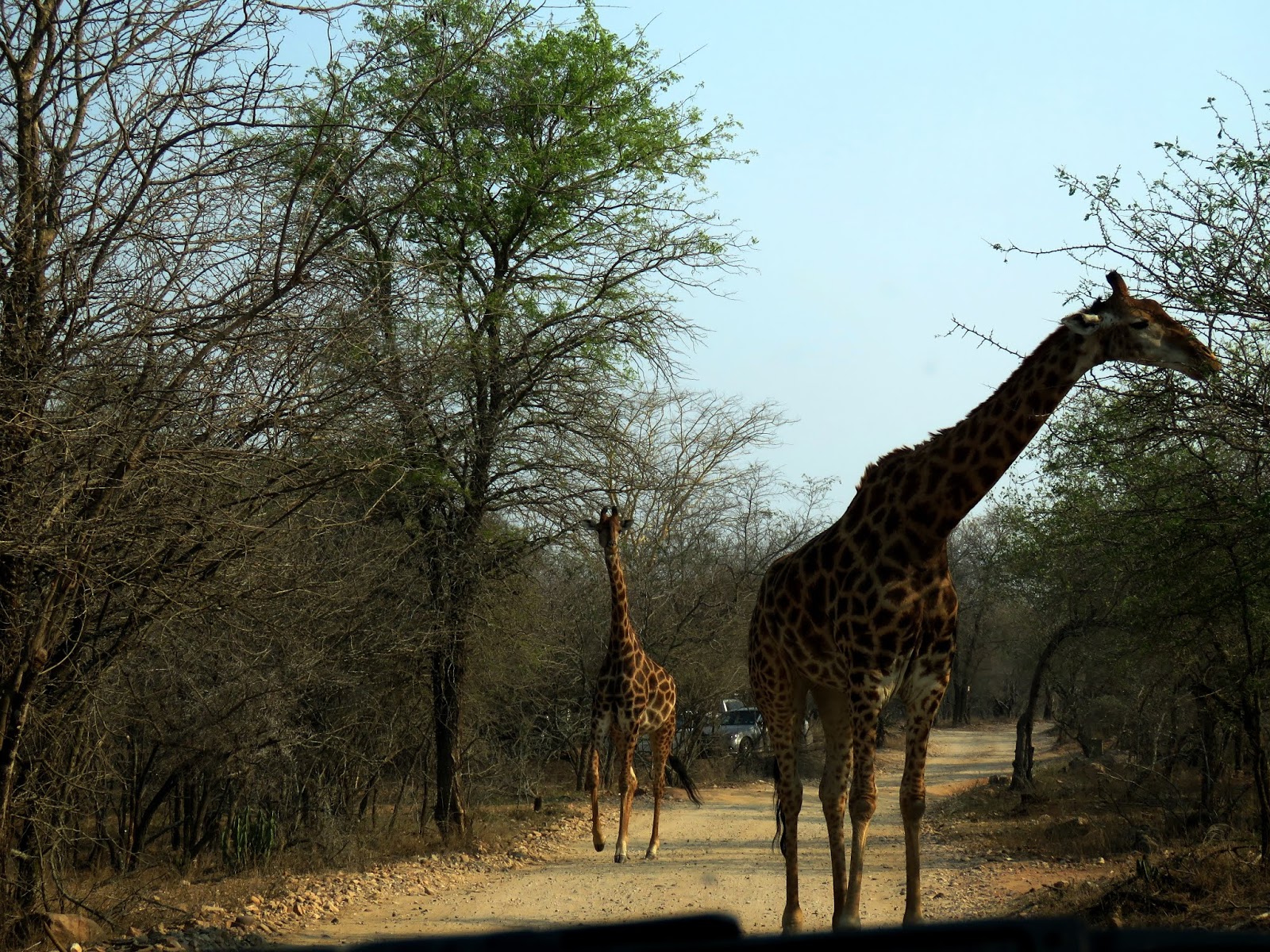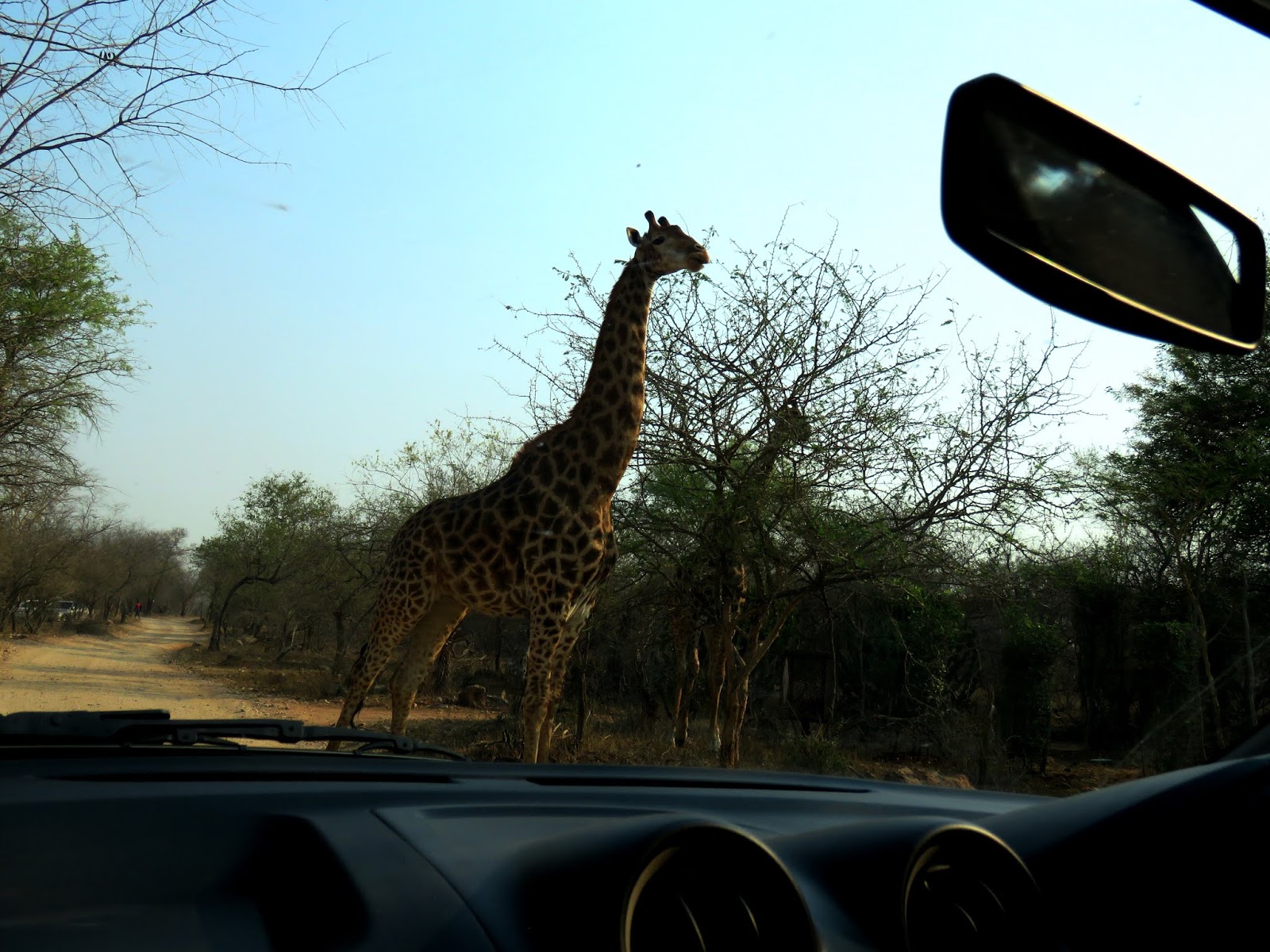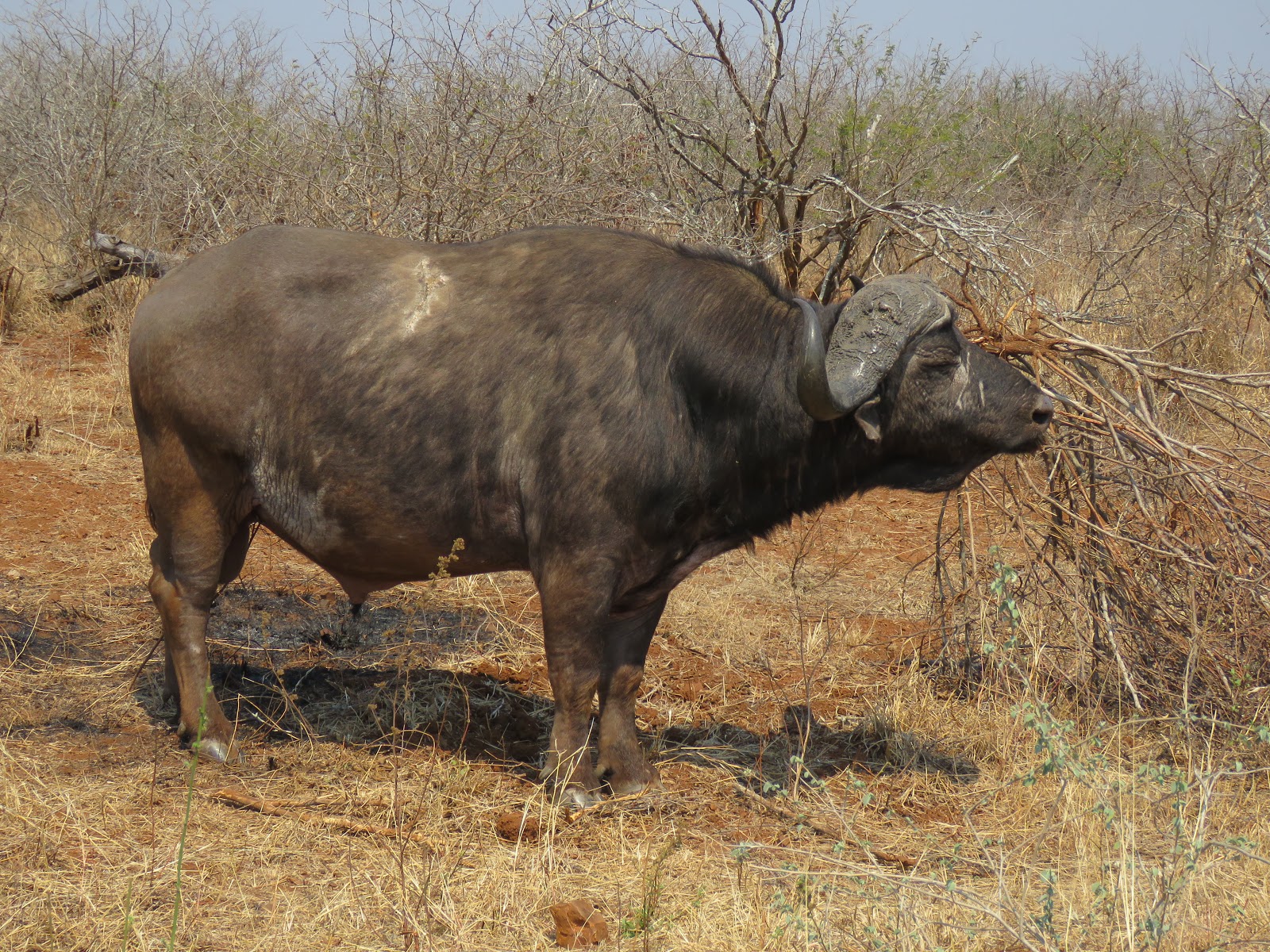“Sighting of the Day in the Bush”
 |
| A little affection between the two warthogs in the garden. |
For us, the fascinating aspect of living in the bush is the opportunity to observe animal behavior. We’re not animal behavioral experts, but after watching wildlife full-time for over a year based on our current and previous time spent living in the bush and on endless safaris, we’ve been able to learn a little.
 |
| We couldn’t help but wonder what was going on here. |
At times, we see interactions and behaviors that leave us wondering what could be going on. Such was the case when we spotted elephants on the river engaged in a most peculiar pattern while attempting to break down or dig into an embankment on the Crocodile River.
We watched for a while before taking the above video, and today’s included photos trying to formalize an opinion as to what was transpiring. We were never able to conclude.
 |
| One lone elephant decided not to participate in the action at the wall. |
As we’ve reviewed the photos and video, we’re still at a loss. But we’re willing to leave it at that…we don’t always get to know what’s in the minds of these and other fantastic creatures. Instead, we made the video, took the photos, and watched and waited until they finally wandered off to the river to drink, eat and clean off.
 |
| Even the youngsters got in on the activity. |
However, these and other animals we’ve observed have left us reeling with excitement to do some further research to see what we can learn. Many online sites offer a wide array of information on elephant behavior, but the one we found most interesting is here.
 |
| Trunks were covered in mud. |
We realize many of our readers prefer not to click on links and videos, so today, we’re sharing some of the excellent information we discovered on the above website as shown below:
Elephants continue to fascinate both scientists and general observers alike. They are recognized as being among the most intelligent creatures on earth. Some enthusiasts believe that their intelligence rivals that of human beings.
Aristotle even said of elephants: “The beast which passeth all others in wit and mind.”
 |
| It appeared they were using their mouths, not as much as their trunks, to dig into the dirt wall. |
Proportionally, the elephant’s brain is the most sizeable at a mass of just over 5kg. Although the largest whale is 20 times the body size of an elephant, its brain is just under twice the size.
The insight and intelligence of the elephant are particularly noteworthy in their ability to mourn their dead. This behavior has only previously been noted in humans. Recently deceased elephants will receive a burial ceremony, while those already reduced to a skeleton are still paid respect by passing herds. The burial ceremony is marked by deep rumblings while the dead body is touched and caressed by the herd members’ trunks.
Intelligence is also manifested in the elephant’s ability to self-medicate. When a pregnant mother is due to give birth, she will chew on the tree’s leaves from the Boraginaceae family to induce labor.
 |
| Every so often, they backed off and took a break. |
The ability to mimic sounds is another indication of the impressive intelligence of these beasts. Elephants have been recorded mimicking passing trucks and even the sounds made by their trainers. Often, the elephant manages to articulate certain sounds to bear a strong resemblance to the spoken word.
Elephants can use tools or implements to accomplish a task they cannot perform on their own. They have been observed digging holes for drinking water, molding bark from a tree into the shape of a ball, placing it on top of the hole, and covering it over with sand to avoid evaporation. They also use sticks to scratch their backs when their trunk cannot reach and have been known to drop rocks on electric fences to damage them.
The elephant’s problem-solving abilities are another impressive facet of their boundless intelligence. Incredibly, the elephant can change its behavior based on a given situation. Bandula, an Asian elephant in captivity, had learned how to release the complex hook on her shackles and would then assist her fellow “inmates” to escape from theirs.
Self-awareness is yet another indication of the vast capacity for thinking and intellect that exists in the elephant. They can recognize themselves in a mirror, something that is extremely rare in the animal kingdom.
These capabilities are merely touching the tip of the iceberg of the elephant’s capacity for insight, thought, and discernment. And it is this capacity that continues to captivate researchers and onlookers alike in their eternal quest to understand the mystery of the elephant psyche.”
 |
| Later, they went down to the river to drink, eat and clean off. |
No doubt, this information is astounding. And yet, as we spend so much time watching elephants in the wild, we remain in awe of the depth of their intelligence and emotions. It appears they have many of the good qualities humans possess, leaving the more negative and critical behind. We have so much to learn from them.
Today, a perfect weather day, cool with temps in the high 20C’s (high 70F’s) range with a few billowy white clouds drifting across a bright blue sky, will keep us on the veranda hoping to see visitors who continue to be at a minimum right now.
This morning, we had a few bushbucks stop by, Frank and The Misses., dozens of helmeted guineafowl, and many birds and hornbills eating the seeds in the birdfeeder. We can always depend on them!
Have a fantastic day filled with wonder.Photo from one year ago today, September 30, 3017:
 |
| Tom’s burger and fries at Donde Bocha Antogeria in Atenas. I ate the little side cup of guacamole when I could eat nothing else on the menu. For more photos, please click here. |






























